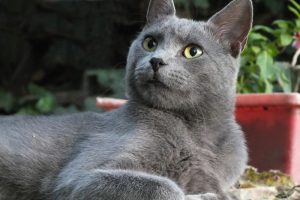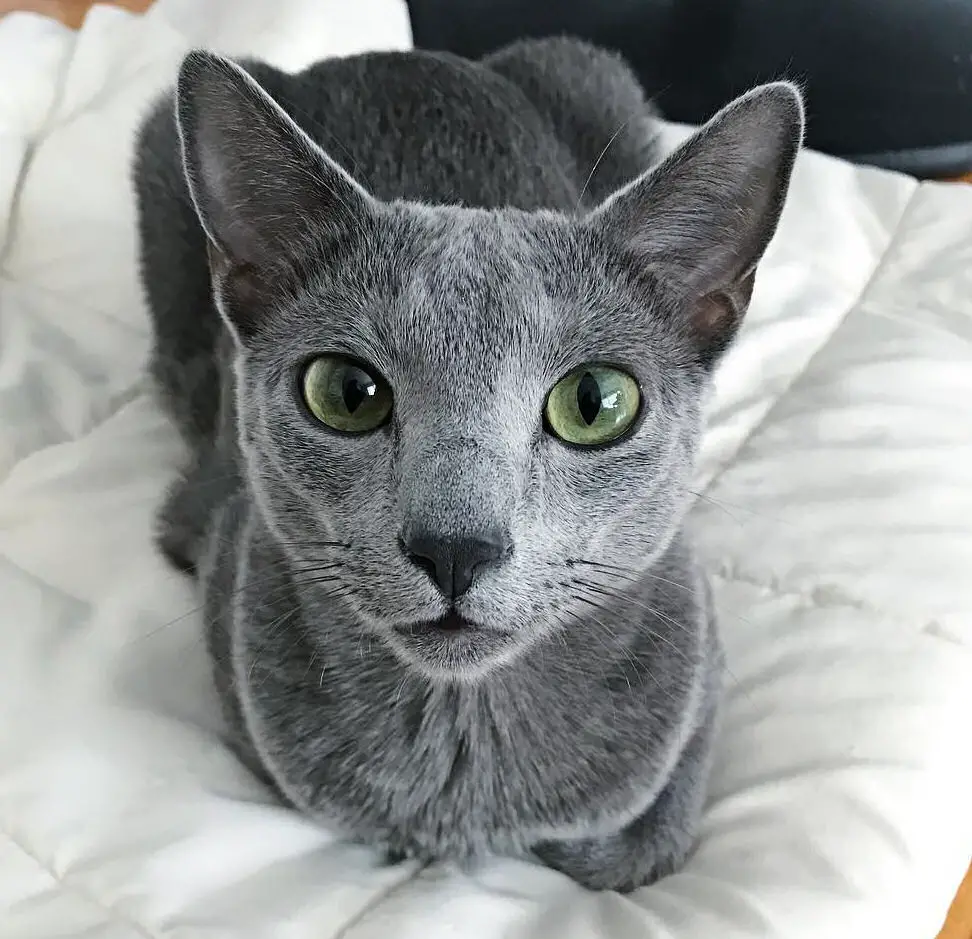Basic information about Russian Blue Cats
The Russian Blue is a distinct and elegant cat breed known for its striking appearance, gentle temperament, and affectionate nature. Here’s an overview of Russian Blue cats:
Appearance
- Coat: The most notable feature of the Russian Blue is its short, dense, and plush coat. The coat is double-layered, with a soft and downy undercoat and a longer, coarser topcoat. It lies close to the body and has a fine texture that feels like silk to the touch. The coat color is a uniform blue-gray, often described as “blue” in cat fancy terminology, with a subtle silver tipping that gives it a shimmering and iridescent quality.
- Body: Russian Blues have a medium-sized body with a slender and athletic build. They are muscular cats with a long, graceful silhouette and a straight back. Their legs are long and elegant, giving them a sleek and agile appearance. Despite their slim physique, Russian Blues have a surprising weight and density due to their muscular build.
- Head: Russian Blues have a wedge-shaped head with a straight profile and flat skull. They have high cheekbones and a strong chin, giving their face a refined and aristocratic appearance. Their ears are large, wide-set, and slightly rounded at the tips, contributing to their overall alert and attentive expression.
- Eyes: One of the most striking features of the Russian Blue is its vivid green eyes. Their eyes are large, almond-shaped, and set slightly slanted. They have a bright and penetrating gaze that adds to their elegant and dignified demeanor.
- Expression: Russian Blues are known for their enigmatic and expressive eyes, which convey intelligence, curiosity, and sensitivity. They have a serene and contemplative expression that reflects their gentle and reserved temperament.

Temperament
Russian Blues are known for their gentle, reserved, and affectionate temperament. They are intelligent and sensitive cats that form strong bonds with their human companions.
While they may be initially cautious around strangers, Russian Blues are loyal and devoted to their families. They enjoy spending time with their owners and may follow them from room to room, offering companionship and affection.
Russian Blues are typically quiet and dignified cats that are not overly vocal. However, they may communicate with soft chirps or trills to express their needs or desires.
History
The exact origins of the Russian Blue breed are unclear, but they are believed to have originated in Russia centuries ago. They were prized for their elegant appearance, luxurious coat, and gentle temperament.
Russian Blues gained popularity in Europe and North America in the late 19th century when they were exhibited in cat shows and admired for their beauty and grace. They were imported to the United States in the early 20th century and quickly became sought-after pets among cat enthusiasts.
The breed faced challenges during World War II, but dedicated breeders worked to preserve and promote the Russian Blue breed. They were officially recognized by major cat associations, including The International Cat Association (TICA) and the Cat Fanciers’ Association (CFA), in the mid-20th century.
Care
Russian Blues have short, dense coats that require minimal grooming. Occasional brushing helps to remove loose hair and distribute natural oils, keeping the coat healthy and shiny.
Provide a balanced and nutritious diet appropriate for your Russian Blue’s age, weight, and activity level. Ensure access to fresh water at all times, and monitor their food intake to prevent obesity.
Keep your Russian Blue mentally and physically stimulated with interactive toys, puzzle feeders, and play sessions. They enjoy climbing, exploring, and engaging in activities that challenge their agile minds and bodies.
Schedule regular veterinary check-ups to monitor your Russian Blue’s health and address any potential issues early on. Keep up with vaccinations, parasite prevention, dental care, and routine blood work as recommended by your veterinarian.

Overall, Russian Blue cats are cherished companions known for their striking appearance, gentle temperament, and affectionate nature. They make excellent pets for individuals and families alike, bringing warmth, companionship, and joy to their homes for many years.
More posts you might be interested in:

